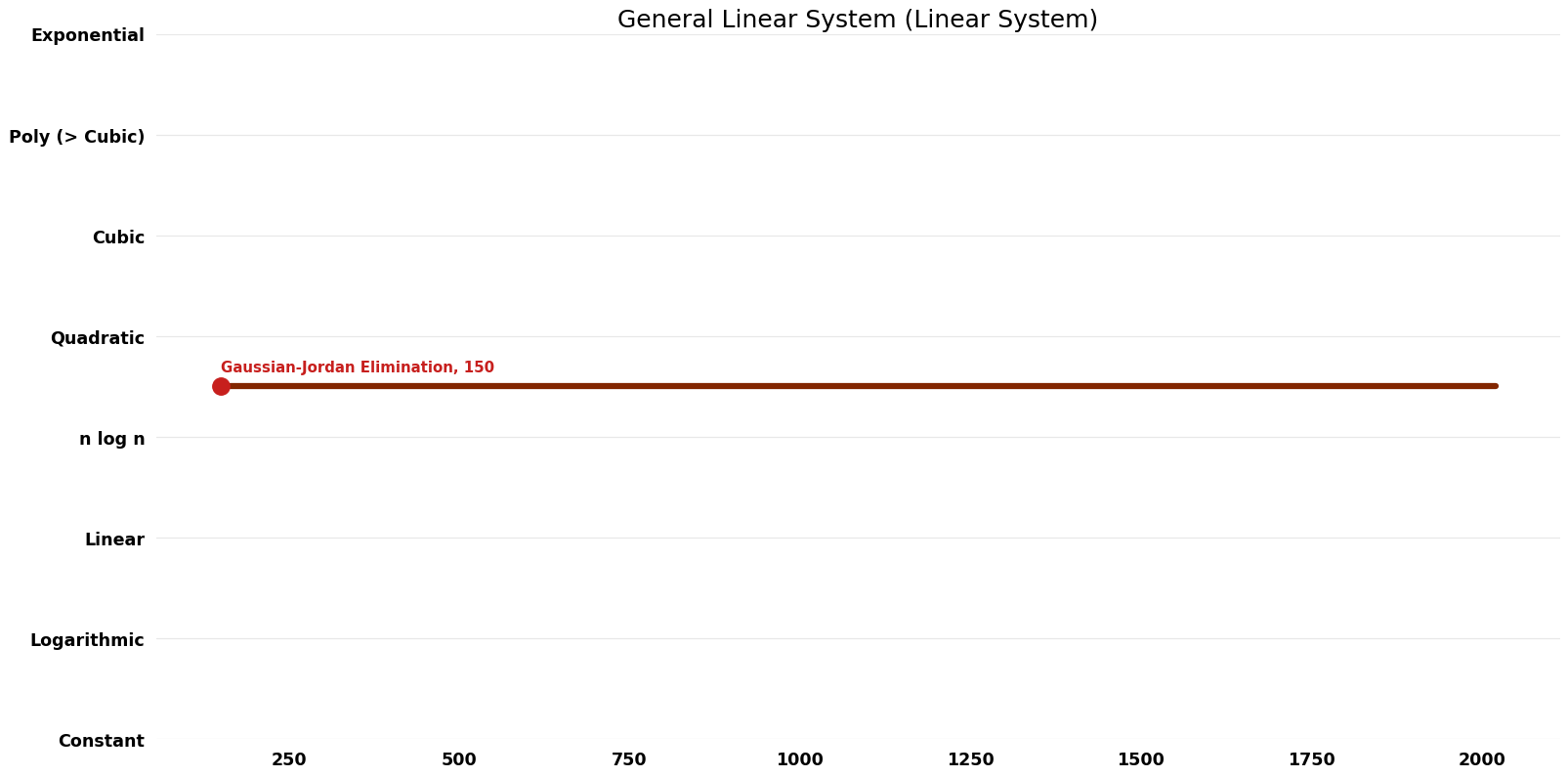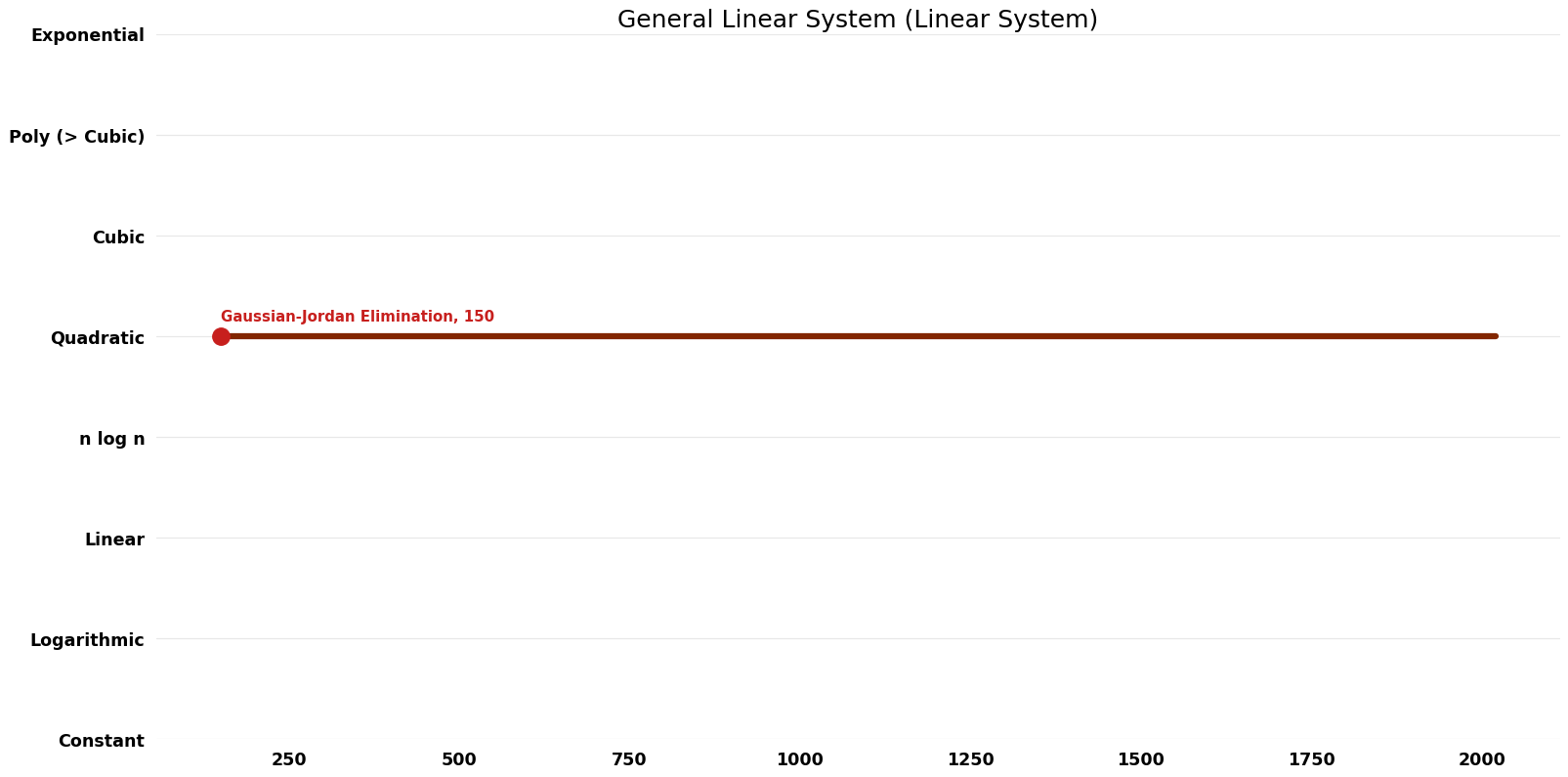General Linear System: Difference between revisions
Jump to navigation
Jump to search
No edit summary |
No edit summary |
||
| (One intermediate revision by the same user not shown) | |||
| Line 12: | Line 12: | ||
== Parameters == | == Parameters == | ||
n: number of variables and number of equations | $n$: number of variables and number of equations | ||
m: number of nonzero entries in matrix | $m$: number of nonzero entries in matrix | ||
k: ratio between largest and smallest eigenvalues | $k$: ratio between largest and smallest eigenvalues | ||
== Table of Algorithms == | == Table of Algorithms == | ||
| Line 38: | Line 38: | ||
[[File:Linear System - General Linear System - Space.png|1000px]] | [[File:Linear System - General Linear System - Space.png|1000px]] | ||
== Space | == Time-Space Tradeoff == | ||
[[File:Linear System - General Linear System - Pareto Frontier.png|1000px]] | [[File:Linear System - General Linear System - Pareto Frontier.png|1000px]] | ||
Latest revision as of 08:18, 10 April 2023
Description
A system of linear equations (or linear system) is a collection of one or more linear equations involving the same set of variables. This is typically written in the form $Ax=b$ where $A$ is a matrix and $x, b$ are vectors. In this case, we impose no restrictions on $A$.
Related Problems
Subproblem: Sparse Linear System, Positive Definite, Hermitian Matrix, Non-Definite, Symmetric Matrix, Toeplitz Matrix, Vandermonde Matrix
Related: Positive Definite, Hermitian Matrix, Non-Definite, Symmetric Matrix, Toeplitz Matrix, Vandermonde Matrix
Parameters
$n$: number of variables and number of equations
$m$: number of nonzero entries in matrix
$k$: ratio between largest and smallest eigenvalues
Table of Algorithms
| Name | Year | Time | Space | Approximation Factor | Model | Reference |
|---|---|---|---|---|---|---|
| Gaussian-Jordan Elimination | -150 | $O(n^{3})$ | $O(n^{2})$ | Exact | Deterministic |


